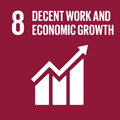- Docente: Paola Subacchi
- Credits: 8
- SSD: SECS-P/01
- Language: English
- Teaching Mode: In-person learning (entirely or partially)
- Campus: Bologna
-
Corso:
Second cycle degree programme (LM) in
International Relations (cod. 9084)
Also valid for Second cycle degree programme (LM) in International Relations (cod. 9084)
Second cycle degree programme (LM) in Politics Administration and Organization (cod. 9085)
Second cycle degree programme (LM) in Politics Administration and Organization (cod. 9085)
Learning outcomes
The course offers a series of advanced analytical tools to understand European economic development as well as economic policies related to EU integration and enlargement, their political and economic prerequisites and their impact on member states. At the end of the course, students will be able to use models of political economy, institutional economics and economic analysis in order to critically evaluate the process of economic integration in Europe in the trade, monetary and financial areas.
Course contents
The course is divided into three main sections.
The first section provides students with the necessary foundations (concepts, theories and history) to understand the integration of the EU and trade globalisation. It covers two main topics: the microeconomics of European integration and the economics of preferential liberalisation.
Case study 1: The first case study examines how the economics of preferential liberalisation works in practice. Starting with a discussion on the different levels of economic integration with the EU, we will look at the past and future relationship between the EU and the UK as a result of Britain’s decision to leave the EU. Students will gain an understanding of the role that the UK played in shaping the EU as well as the tensions that ultimately resulted in Brexit. Students will learn about the Trade and Cooperation Agreement which now governs the trade relations between the EU and the UK, and how this compares EU membership. We will go on to consider two issues in depth: fishing and the Irish border.
The second section focuses on the EU’s trade policy, both at the multilateral and bilateral level – from WTO rules to bilateral trade and investment agreements – and looks at the internal EU trade policy formulation and the external negotiating dynamics. For this we will explore how the EU’s trade policy is articulated and implemented. This section also considers the role of trade policy as a tool to engage the trade partners with the EU’s goals for economic development and promote good standards (environmental, food, human rights etc.).
Case study 2: The second case study takes a detailed look at the relationship between the EU and China from the perspective of bilateral trade. The focus will be on how the rise of China has altered the dynamics of the global economy, what this means for the rest of the world, and how the EU and China have responded to this shift by creating a framework for relations and trade that underpins their bilateral cooperation. There will be scope to examine and discuss the EU-China Comprehensive Agreement on Investment.
The third section looks at the logic of economic growth within the context of Europe’s single market as well as with regard to the external partners. We will discuss how economic integration has contributed significantly to growth, competitiveness and employment in the EU. We will also address the EU’s future prospects for growth and explore the current biggest obstacles and drivers of growth, including the demographic transition, technology and innovation, and climate change.
Case study 3: The third case study looks at trade and the environment and questions the stability of economic growth that is underpinned by unsustainable trade practices. We will examine the existing relationship between good environmental practices and trade agreements as set out in the EU’s existing treaties, and what the way forward should look like.
Case study 4: The fourth case study focuses on the Next Generation EU Recovery Fund to coordinate the EU response to the Covid-19 crisis and reconstruct the EU pandemic-stricken economies. We will discuss how the Fund can strengthen growth potential, job creation and economic and social resilience of the EU member states, and provide an effective contribution to the green and digital transition.
Readings/Bibliography
We will use the following book throughout the course to cover the basic concepts:
Richard Baldwin and Charles Wyplosz, The Economics of European Integration (London: McGraw Hill Education, fifth edition, 2015), chapters 1-5, and chapters 7 and 12.
A full reading list consisting of additional required readings and suggested further readings will also be made available at the beginning of the course. Any other material used in class will be made available online afterwards.
The exact reading list changes from year to year, but it consists of a variety of different materials from various sources, including policy briefs, papers, op-eds, and podcasts.
Teaching methods
The course is mainly taught online using MS TEAMS. Students will be able to follow the lessons of the entire course remotely on MS TEAMS.
Attendance at all lectures is strongly recommended, especially for the case study sessions when students will have more opportunity to share their ideas and advance their analytic ability.
I understand that remote learning is not everyone’s preference, and I will do my best to ensure that the classes are dynamic and engaging. As such, you can expect multimedia content (such as short clips and videos), regular short breaks, and time for questions and class discussions.
I will also invite some external guest speakers (such as journalists, policymakers, and industry experts) to present on particular topics throughout the course.
Assessment methods
The course is assessed during the main exam periods (June-July, September and January-February), and consists of an online written exam (25%) and an essay (75%). Students can pick which exam session they would like to attend and must submit their essay at least one week prior to this.
- Exam
The written exam requires students to answer some specific questions on the course's material. Students will be required to explain whether a statement is true or false, and/or comment on specific statement. They will have 60 minutes to complete the exam.
The written exam accounts for 25% of the final mark. Students must pass the written exam to pass the course.
- Essay
There is no set question for the course essay. Students will be required to pick a topic of their choice within the remit of the course and submit an essay no longer than 3,000 words in total.
The objective is to produce a brief that is informative and analytical, but also concise and focused. Building on your knowledge of the course material and even expanding it, you need to show the ability to provide good analysis based on solid information.
The course essay accounts for 75% of the final mark and needs to be submitted at least one week before the chosen exam date.
Teaching tools
Presentations and reading material will be made available online.
Office hours
See the website of Paola Subacchi
SDGs



This teaching activity contributes to the achievement of the Sustainable Development Goals of the UN 2030 Agenda.
